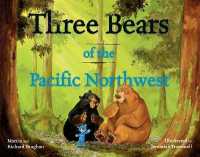- ホーム
- > 洋書
- > 英文書
- > Cinema / Film
Full Description
Kinoshita Keisuke was once thought of as the equal in importance and popularity to his colleague Ozu Yasujiro and friend Kurosawa Akira. In many ways, he was even more popular with audiences than they were, as well as being a critical favorite. He had built an overseas following with prestigious festival play and was considered an innovator for his use of color and widescreen. In addition, he was known for his cinematic depictions of the plight of women under rigid social restrictions along with his often-rebellious heroines who endured and sometimes triumphed. Yet he is much less known than his fellow filmmakers. Leading scholars from the US, Australia, the UK and Japan, relying on close analysis and numerous Japanese sources come together to redress this gap and demonstrate why Kinoshita deserves to be returned to the pantheon Japanese and world cinema.
Contents
Introduction
David Desser and Earl Jackson
1. One Big Happy Family? The Social Relationships and Legacy of the Kinoshita-gumi
Lauri Kitsnik
2. Reading Between the Lines: Contrary Messages in the Wartime Films
Earl Jackson
3. Morals and Camera Movements: Kinoshita Keisuke According to Yoshida Yoshishige
Daisuke Miyao
4. Bold Kinoshita, Tender Kinoshita: Close-ups and Long Shots
Linda C. Ehrlich
5. Living Memory: History and Experience in She Was Like a Wild Chrysanthemum and The Snow Flurry
Alexander Jacoby
6. Farewell to Joy and Sorrow: Revisiting Kinoshita's 'Chaotic' Period
William Carroll
7. The Lovelorn Plight of Ishizu Keizō: Music and Male Desire in Here's to the Young Lady and The Tattered Wings
Mina Ku
8. Chronicles of Love and Hate
Mats Karlsson
9. The Celebration of Being Useless through Food: Portrayals of Older Women in Danger Stalks Near and The Ballad of Narayama
Yutaka Kubo
10. The Image Becomes You: Representation and 'Self"-understanding
Earl Jackson
11. Demystifying Mother: Mother-Daughter Relationships in A Japanese Tragedy and The Scent of
Incense
Mika Ko
12. More Times of Joy and Sorrow - the Self-sequel and Late Style
David Desser
13. Kinoshita's Children: Memories of Kinoshita's Films among Audiences of the Postwar Era
Jennifer Coates








